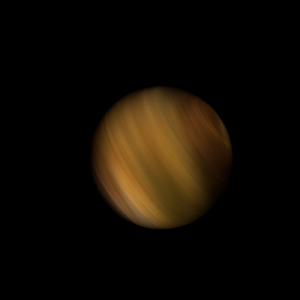|
|
Space Astro
|
Info for exoplanet "Mugeta Tominya"
| Scientific (actual) data |
|---|
| Name | Kepler-113 b |
| Planet status | Confirmed |
| Planet mass | 0.037 |
| Radius | 0.162 |
| Orbital period | 4.754 |
| Discovered | 2014 |
| Updated | 2021-02-05 |
| Tconj | 2454960 |
| Impact parameter | 0.08 |
| K | 5.4 |
| Publication | Published in a refereed paper |
| Detection type | Primary Transit |
| Radius measurement type | Primary Transit |
| Alternate names | 2MASS J19115949+5056395 b, K00153.02, KIC 12252424 b, KOI-153 b, KOI-153.02, WISE J191159.48+505639.2 b |
| Star name | Kepler-113 |
| Right ascension | 288° |
| Declination | 50.94° |
| Mag v | 13.461 |
| Mag i | 13.097 |
| Mag j | 11.886 |
| Mag h | 11.36 |
| Mag k | 11.255 |
| Star distance | 264.35 |
| Star metallicity | 0.05 |
| Star mass | 0.75 |
| Star radius | 0.69 |
| Star age | 6.89 |
| Star temperature | 4725 |
| Star alternate names | KOI-15, KIC 12252424, 2MASS J19115949+5056395, KOI-153, WISE J191159.48+505639.2 |
| Wikipedia article | Kepler-113 b |
Back
| |
| Fictional info (?) |
|---|
| Suggested name | Mugeta Tominya |
| Planet type | Small cold gas planet |
| The planet telescopically displays the complete range of phases, similar to Venus and the Moon, as it moves in its inner orbit relative to Kepler-113, which reoccurs over the so-called synodic period approximately every 122 days.
The volume of water ice in the south polar ice cap, if melted, would be sufficient to cover the entire planetary surface to a depth of 13 meters.
The outer atmosphere is visibly segregated into several bands at different latitudes, resulting in turbulence and storms along their interacting boundaries. |
| Atmosphere | Carbonyl sulfide | 37% |
| Carbon monoxide | 29% |
| Hydrogen peroxide | 17% |
| Methane | 9% |
| Ammonia | 6.8% |
| Atmospheric pressure | 0.001 bar |
 |
| No known satellites |
| Google search for Mugeta tominya |
|
Website by Joachim Michaelis
|
|
|
|